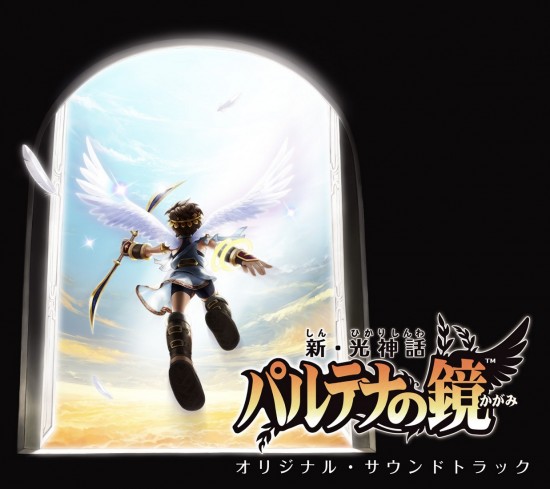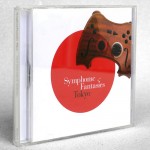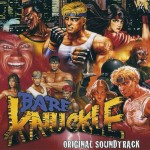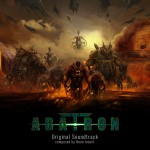Everyone knows Nintendo’s been stingy about retail soundtrack releases for the past decade. It’s hard to get anything out of them.
Fortunately, the new soundtrack for Kid Icarus Uprising (in Japanese, Shin Hikari Shinwa Palutena no Kagami or “New Light Myth: Palthena’s Mirror”) proved to be an exception. The three disc soundtrack, published by Yasunori Mitsuda’s “Sleigh Bells” label, is about as “complete” as anyone could want. Three discs, featuring multiple musical cues for each stage in the 3DS title, with music from seven different composers, all of whom boast some name recognition among VGM aficionados. Even more crazy, much of the album features performance from a full orchestra, with album credits as big as (or, slightly bigger than) Final Fantasy XIII. Yeah. That’s huge.
After the jump, I’ll be picking out some of my favorite tracks from each composer and trying to determine how, when or why Kid Icarus earned such a place in Nintendo’s pantheon.
It’s easy to get lost in the large-ness of this soundtrack. There are a lot of orchestral cues, and not all of them are really memorable. They’re big, but they’re like the resounding gong of biblical 1 Corinthians 13. Without love, without careful attention to detail, it’s just a loud noise. Impressive, but nothing I could care about.
The first track that grabbed my attention was “Magnus’ Theme” (sometimes translated “Magna’s Theme”), penned by Yuzo Koshiro. It has a great melody and the orchestration isn’t so complex that it implodes into a black hole of sound.
The next song to catch my attention was Mitsuda’s opener for chapter 5: “Pandora’s Trap.” This is genius. The first 30 seconds are fully orchestral, then this crazy sound-warble comes in and literally sucks the orchestra dry. Then guitars and wailing keyboard synths jump in, but the orchestra is still there… just quieter. This tech/orchestra mixture is a potent combination. Mitsuda deserves much credit for this one. Very cool.
Even better, though, are the two tracks for chapter 6: “Black Pit” and “Temple Ruins” (followed by Black Pit’s Theme). This is some country-western plus orchestral goodness, on par with Michiko Naruke’s classic Wild Arms score. Your head WILL bob to this. I demand it.
The first disc ends with a couple of really solid tracks. Motoi Sakuraba’s “Chapter 9: Underworld Guardian” allows Sakuraba to do a more upbeat, more simple kind of prog-rock than what he does for Tri-ace and the Tales team(s). In other words, I like it. Then, tacked to the end of the first disc, we get the “False Ending” theme, which uses hardware-emulated NES chiptunes to grab a melody from Hirokazu “Hip” Tanaka’s original work for the very first Kid Icarus.
If you’re following along the tracklist, you’ll noticed I skipped a lot of tracks on the first disc. And here’s the deal: as much as I want to love Natsumi Kameoka’s orchestrations, they generally just don’t hold my attention. But there are exceptions! For example, her work orchestrating both versions of “Chapter 10: The Wish Seed” (Volcano Route / Cave Route) are to be praised. They use different techniques, and they make really effective use of a full orchestra. I don’t get bored or annoyed listening to this one. There are others, but this is the only one among Kameoka’s arrangements with the full orchestra that I’m going to focus in on.
Now, if you thought Sakuraba was the only person capable of hard rock with a pulsing drum beat, think again. “Chapter 14: Crash at Lightning Speed” is composed by Sakuraba, but Mitsuda is helping out for the arrangement. It has this crazy 12-tone bass opening the song, as though it were opening the gates to chaos itself. From there, we get chromatic riffs from the rhythm guitar, and the lead guitar is just doing insane stuff on top. After all the chaos subsides, Mitsuda breaks into a bright and fun rock song (at about the 40 second mark), and those keyboard synths up top … oh man, it’s like ’80s metal at its prime. So, yeah, Dream Theater meets Stan Bush. That’s a winning combo.
When you’re ready for this album to reach an epic climax, head to “Chapter 25: The War’s End.” This is like, happy mascot Pit from Nintendo descends into serious Greek doodoo, like God of War style. For this song, Iwadare and Sakuraba are co-composing, and you’re getting 10 minutes’ worth of insanity. Nice.
And, well, that’s the end of it. For me anyway. There are a total of 71 songs across the three discs, but I’m not reporting on the whole thing. It’s just too much, and like I said, I get lost in it.
But we do have one important task at hand: speculation! Why did Kid Icarus Uprising, of all of Nintendo’s franchises, get such high-quality audio treatment? Here’s my theory, right or wrong:
After Nintendo and HAL Labs did the third Super Smash Bros game (Brawl, the one for Wii), they were tickled pink by how the fans reacted to the star-studded list of arrangers for the project. And, they were also surprised by the fan reaction to seeing the triumphant return of long-dormant “Pit” from Kid Icarus.
Hence, they decided to combine the two “surprises” of SSBB by having Mitsuda’s Procyon Studio recruit the necessary team to build an epic musical score for the new Kid Icarus game. And, in many ways, it paid off. If you want to “pay in,” the 3 disc OST is published by Sleigh Bells (catalog number SBPS-0016~8).
So, what do you think of this OST? What do you think of the theory? And, if you’ve played this crazy 3DS shooter, what do you think of the game? We’re all ears!
Tags: Hirokazu Tanaka, Kid Icarus, Kid Icarus Uprising, Masafumi Takada, Motoi Sakuraba, Music Reviews, Natsumi Kameoka, Nintendo, Noriyuki Iwadare, Orchestra, Palutena no Kagami, Reviews, Saki Kasuga, Shin Hikari Shinwa, Sleigh Bells, Takahiro Nishi, Yasunori Mitsuda, Yuzo Koshiro









































Maybe it’s just nitpicking, but “they don’t hold my attention” is not a sufficiently satisfying response someone reading a (supposed to be more professional) review would expect.
Personally I think anything Sakuraba wrote in this soundtrack is pure gold. Even some of his trite formulaic compositions sound majestic and fulfilling because of the big orchestral treatment.
mieu,
You’re right that I likely didn’t do this soundtrack justice in my description and analysis. I found it all very overwhelming and sort of threw in the towel with a statement like “they don’t hold my attention.” It’s honesty, but yes, I suppose it’s *cheap* honesty.
That said … The Sakuraba compositions are impressive. Strangely, I was still more drawn to the prog-rock-ish appearances, but the full orchestra did make his contributions that much more interesting. Sakuraba syndrome, this album does not have.
Thank you for your input!
I don’t believe that Mitsuda wrote “Chapter 5 Pandora’s Trap”. The booklet credits 桜庭統/高田雅史 (Motoi Sakuraba/Masafumi Takada). While quite involved with orchestration and overall production of this album, composition-wise Mitsuda (unfortunately) only did Disc 1 Tracks 1 and 4, and co-wrote track 2 with Motoi Sakuraba.
Honestly? I don’t like this new review. How could you not note the original track arrangements from the NES-game? What’s about the Main Theme (Chapter 1, the return of palutena)? It’s a fine upbeat tune. Nevery realized that the game follows a similar power-up theme route like the Skies of Arcadia OST? Most of the tunes reprises a lot of times during the game. And what’s about the OST itself? A playful slipbox, a good cardbox design, the OST categorized in the three main chapters, a bonus card for the game as well. Really, what went wrong this time? I looked forward to see a review here, however I’m really disappointed how it turned out.
skitch — thanks for the correction. It seems you are right. I misinterpreted the liner notes pretty bad in that case.
And Miles — what went wrong? Indeed, a good question. With all the negative feedback I’m getting, I’m tempted to just pull this review down and ask another of our writers to do a better review. I had meant for the review to be something of a cursory overview, mostly to let people know the album existed.
Though, to critique your own comment, I don’t know what exactly makes a slipbox “playful.” I’ve seen a lot of unique packaging in my day and while I might say “clever” I’d never say “playful.”
I’ve been having problems finding a copy of the CD online, as it isn’t listed for some reason. Would it be possible if you could provide me a link for where I can purchase a copy of the Kid Icarus: Uprising soundtrack?